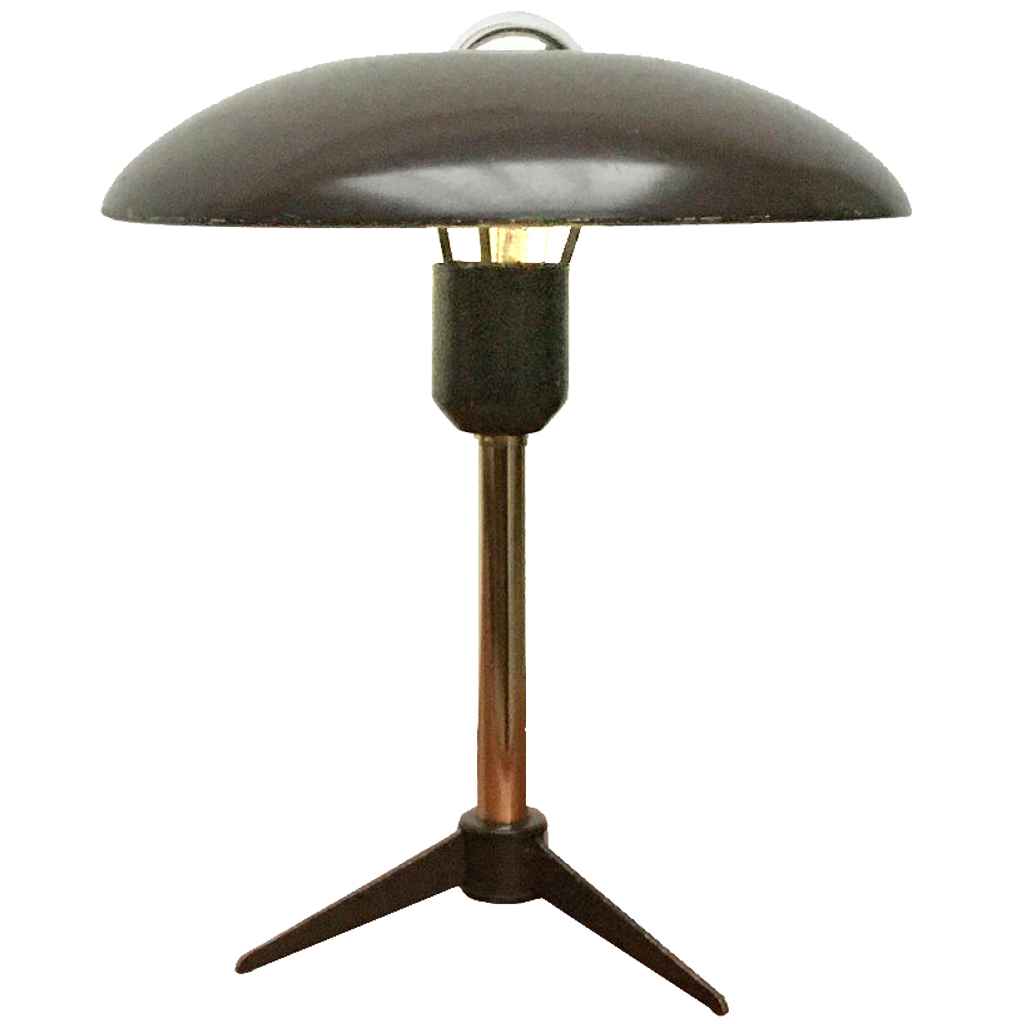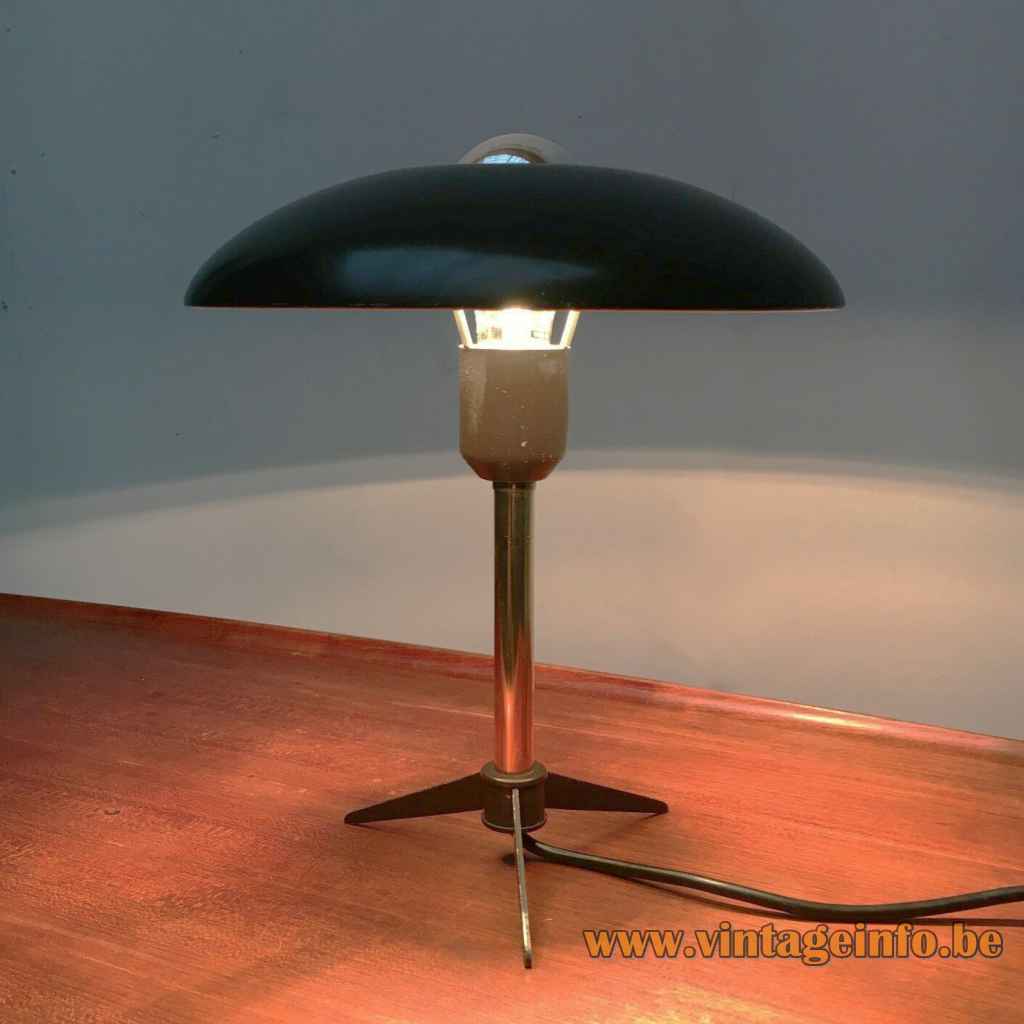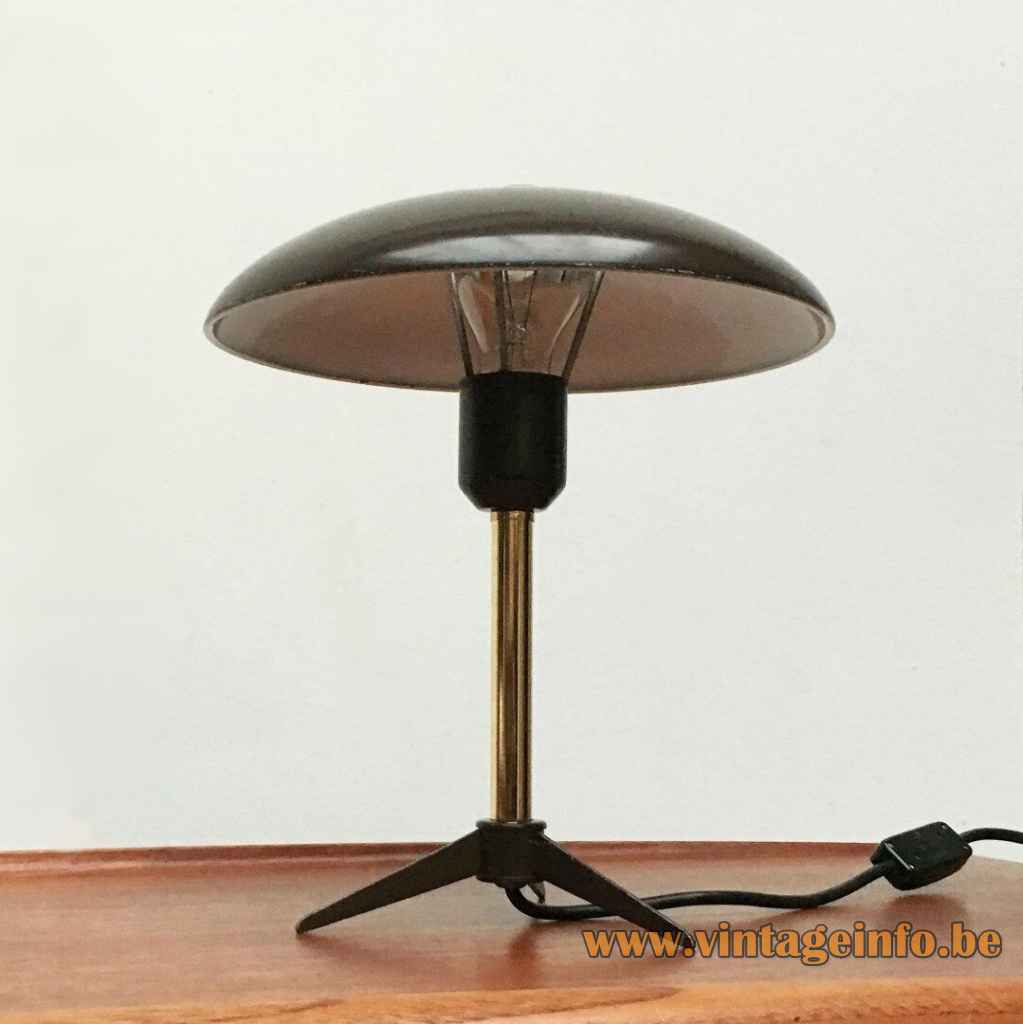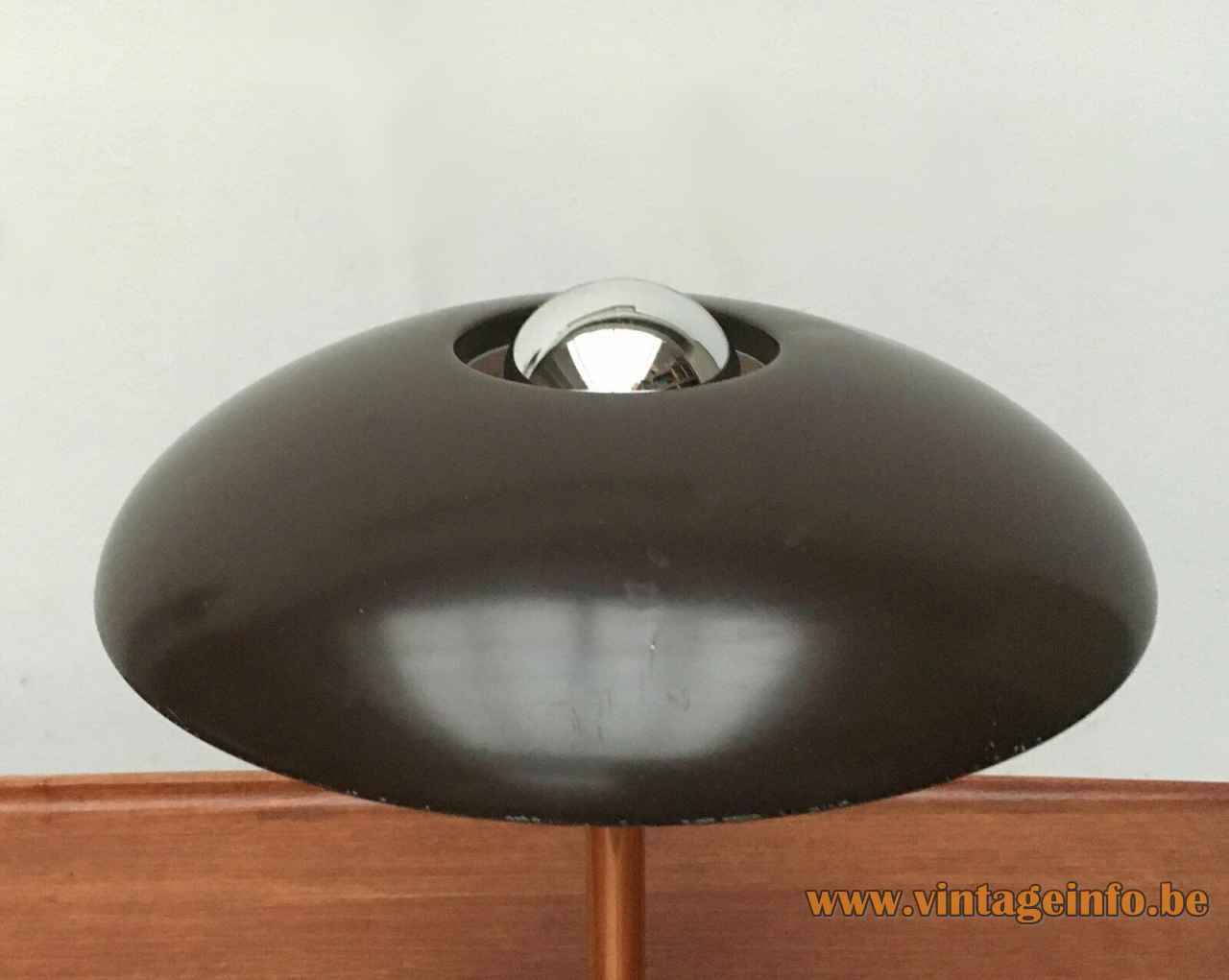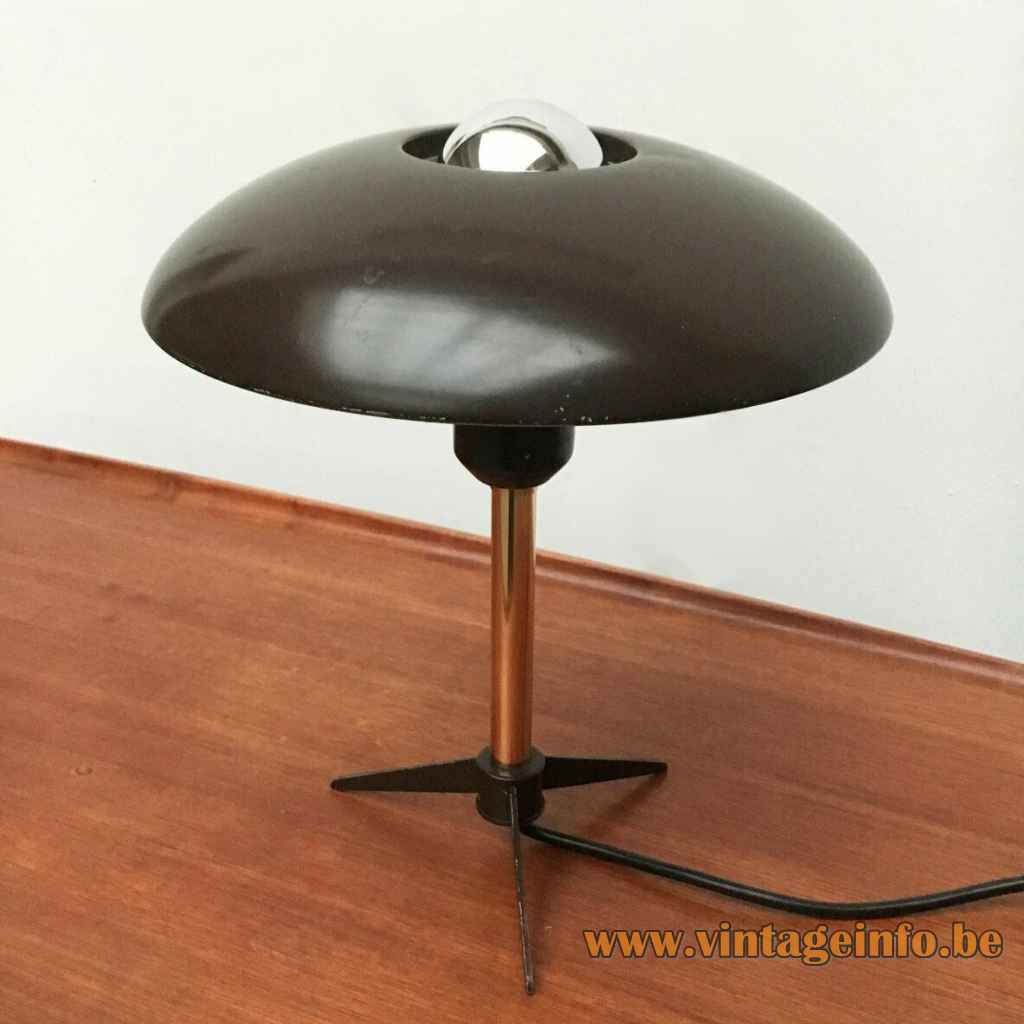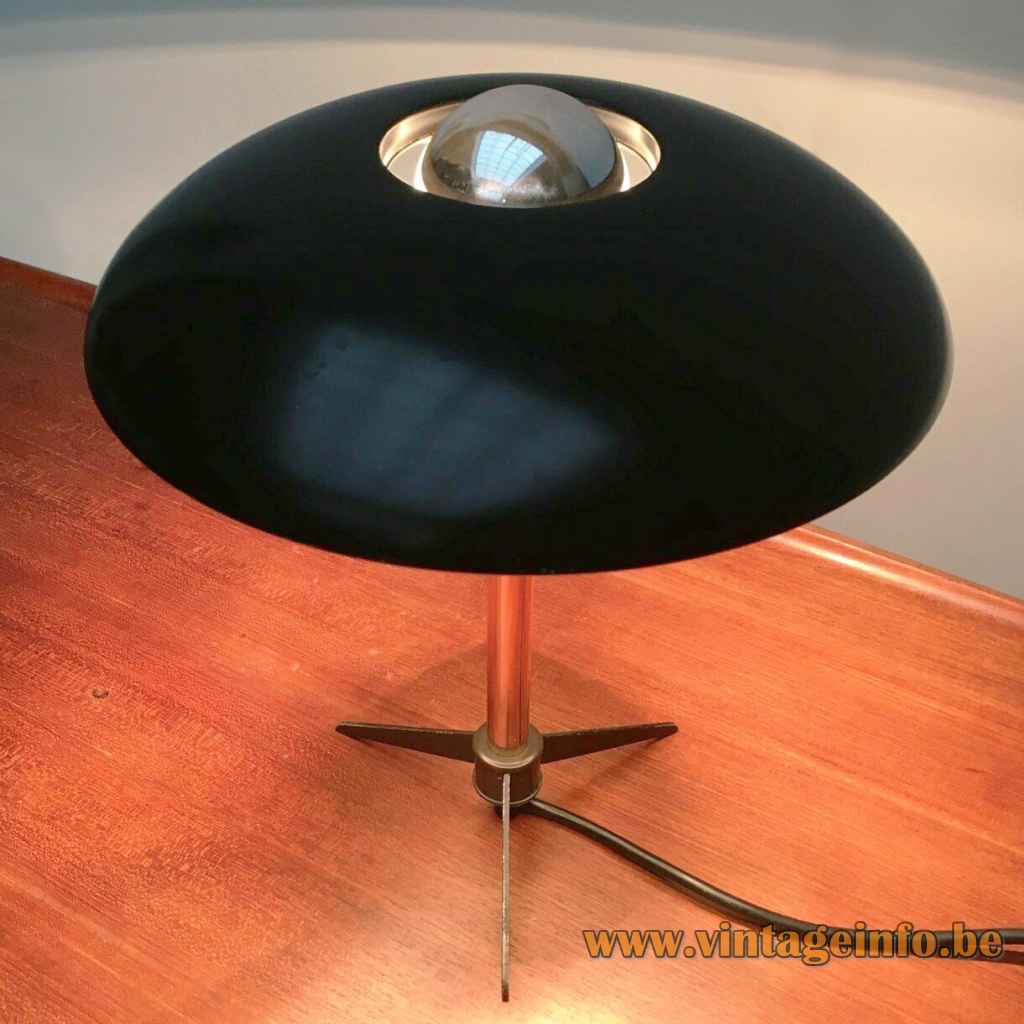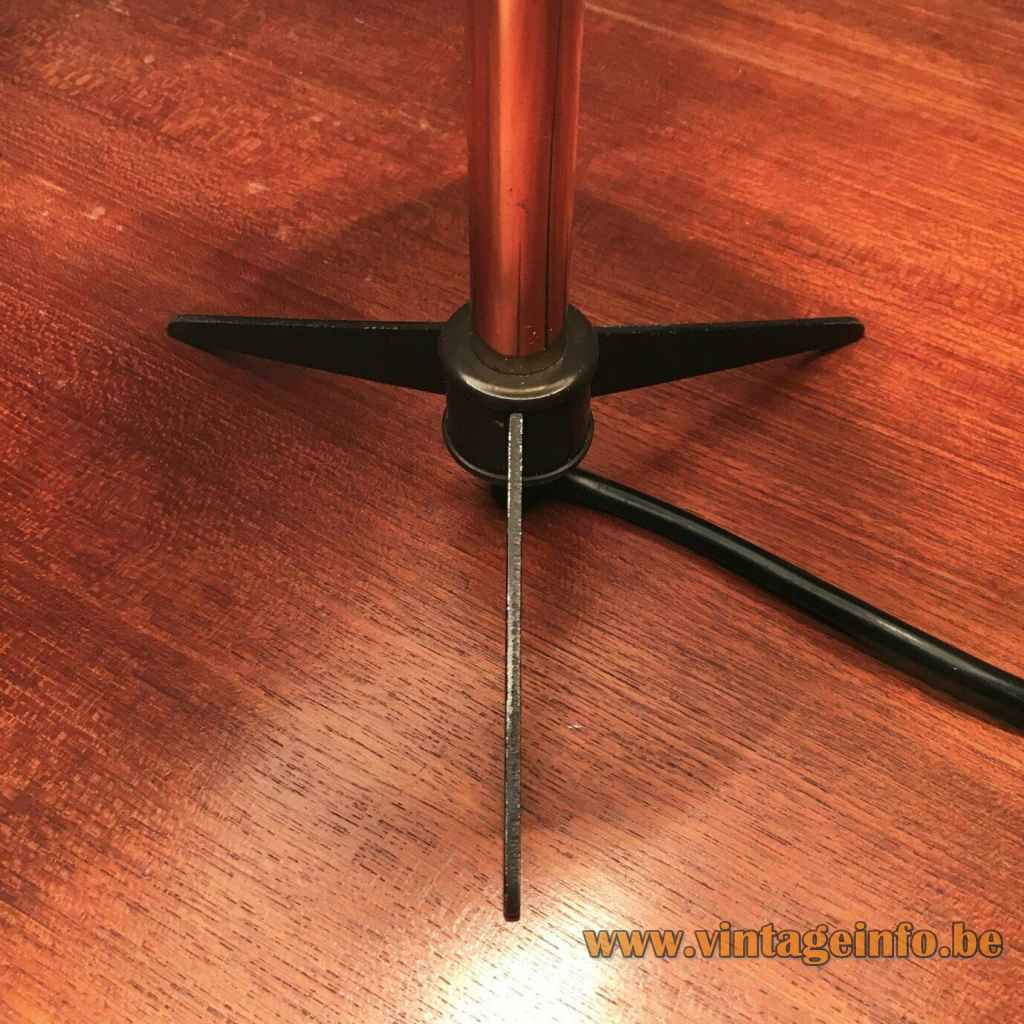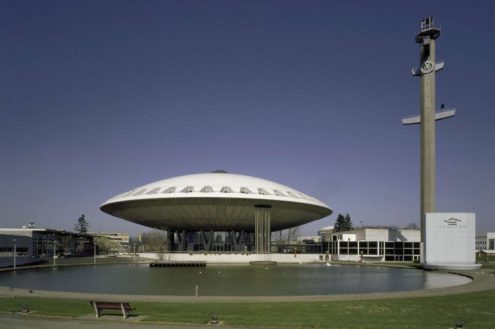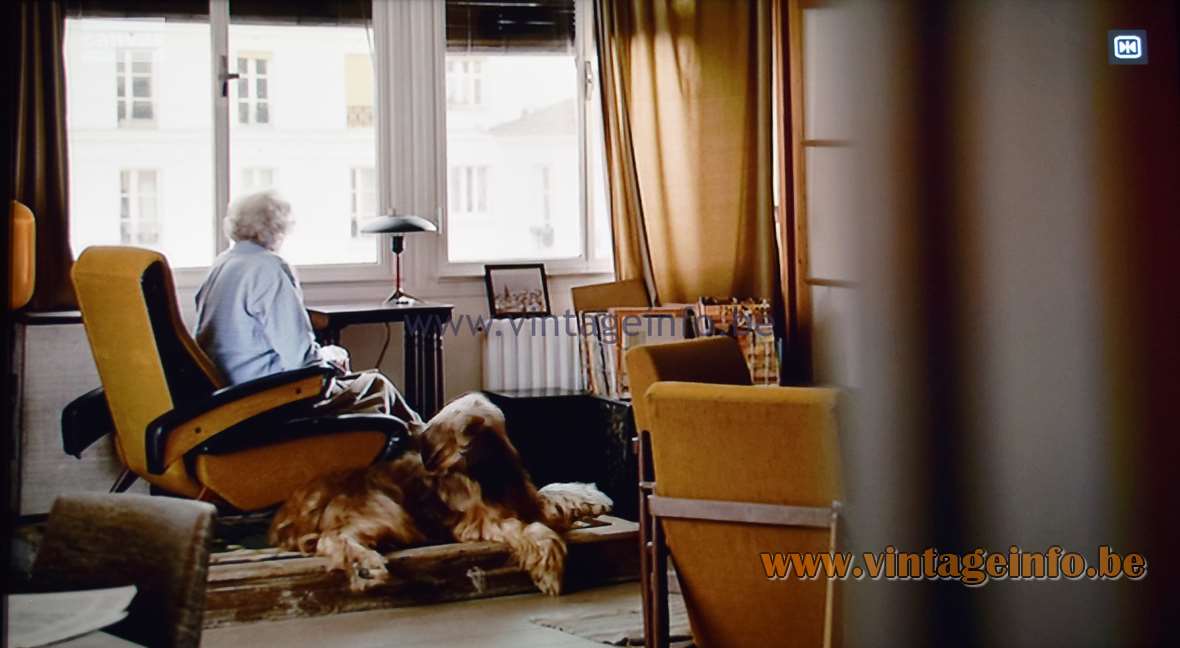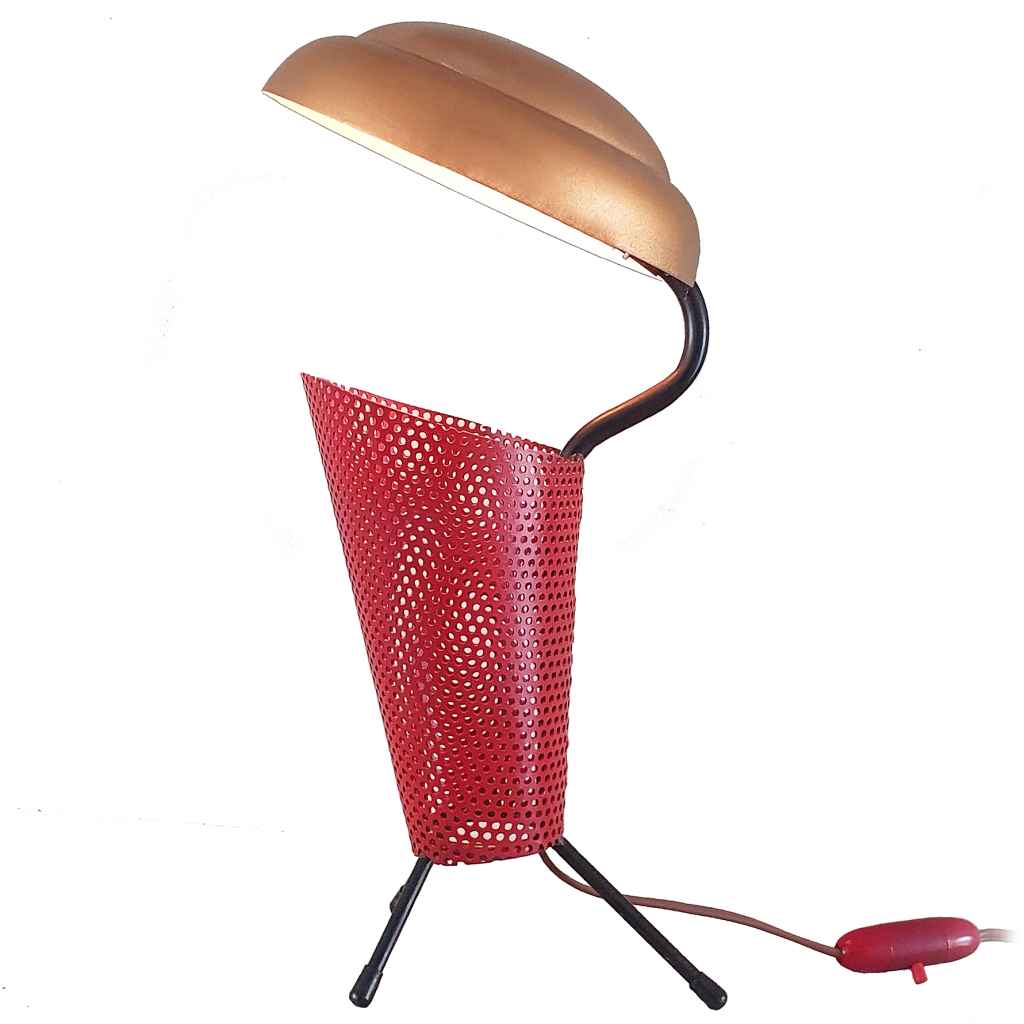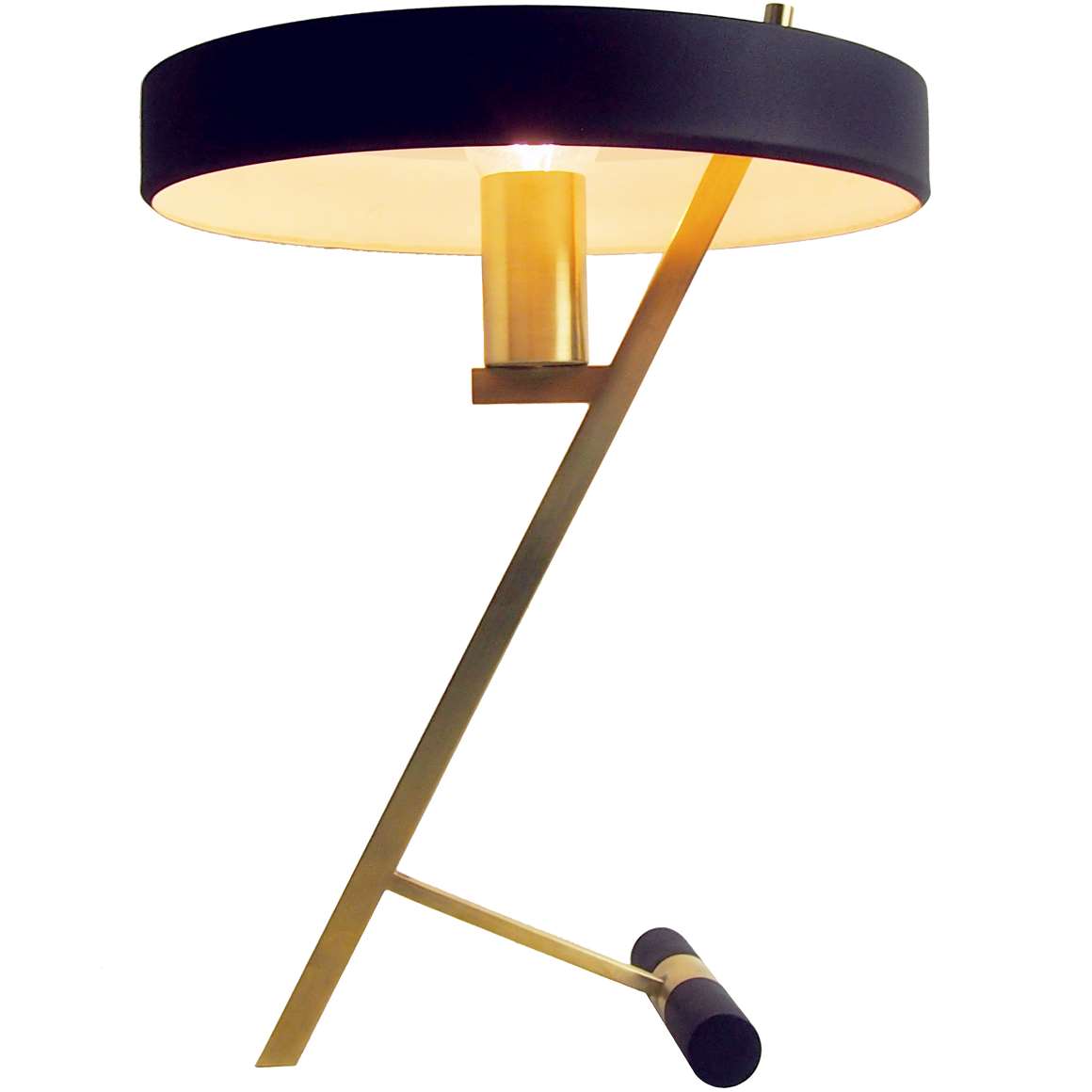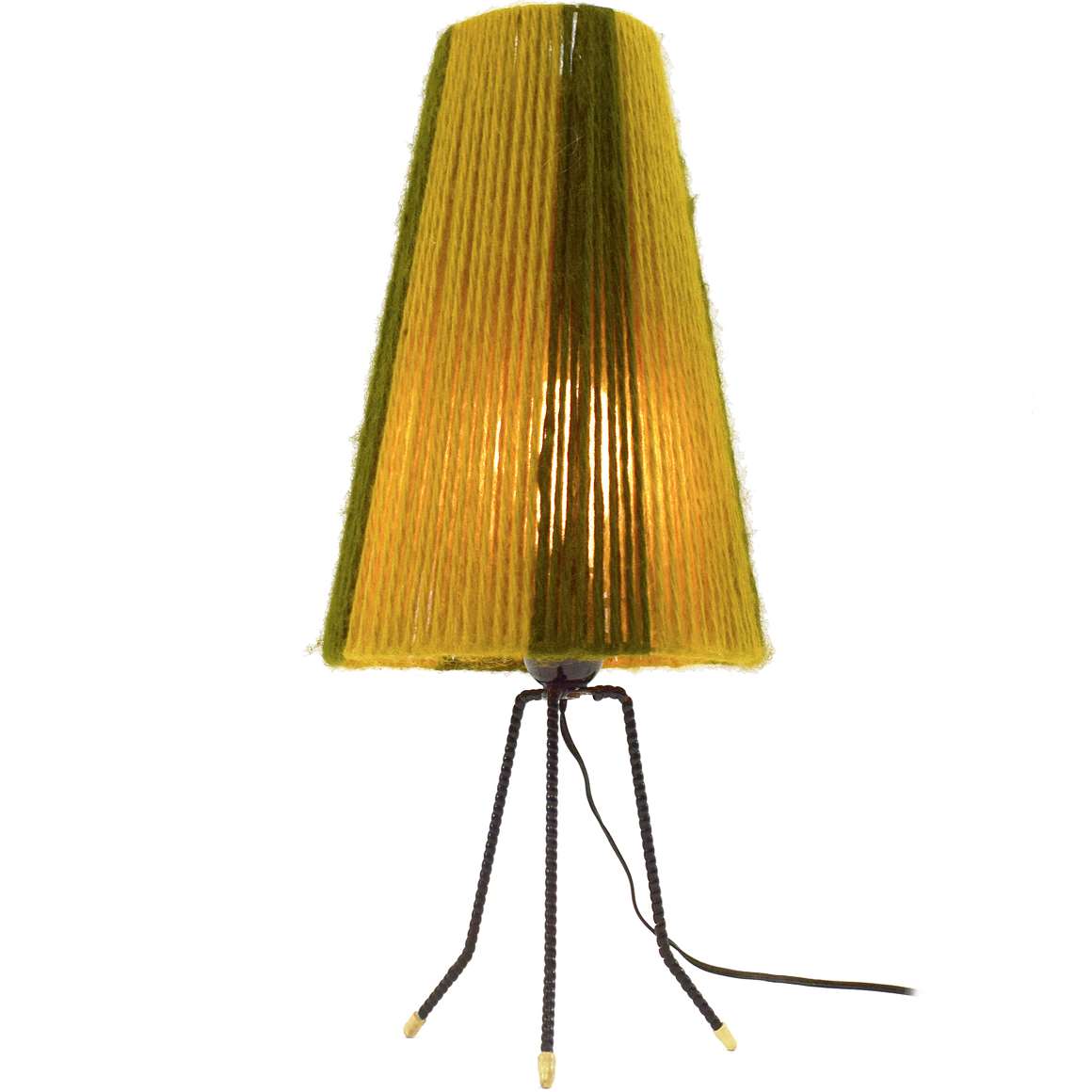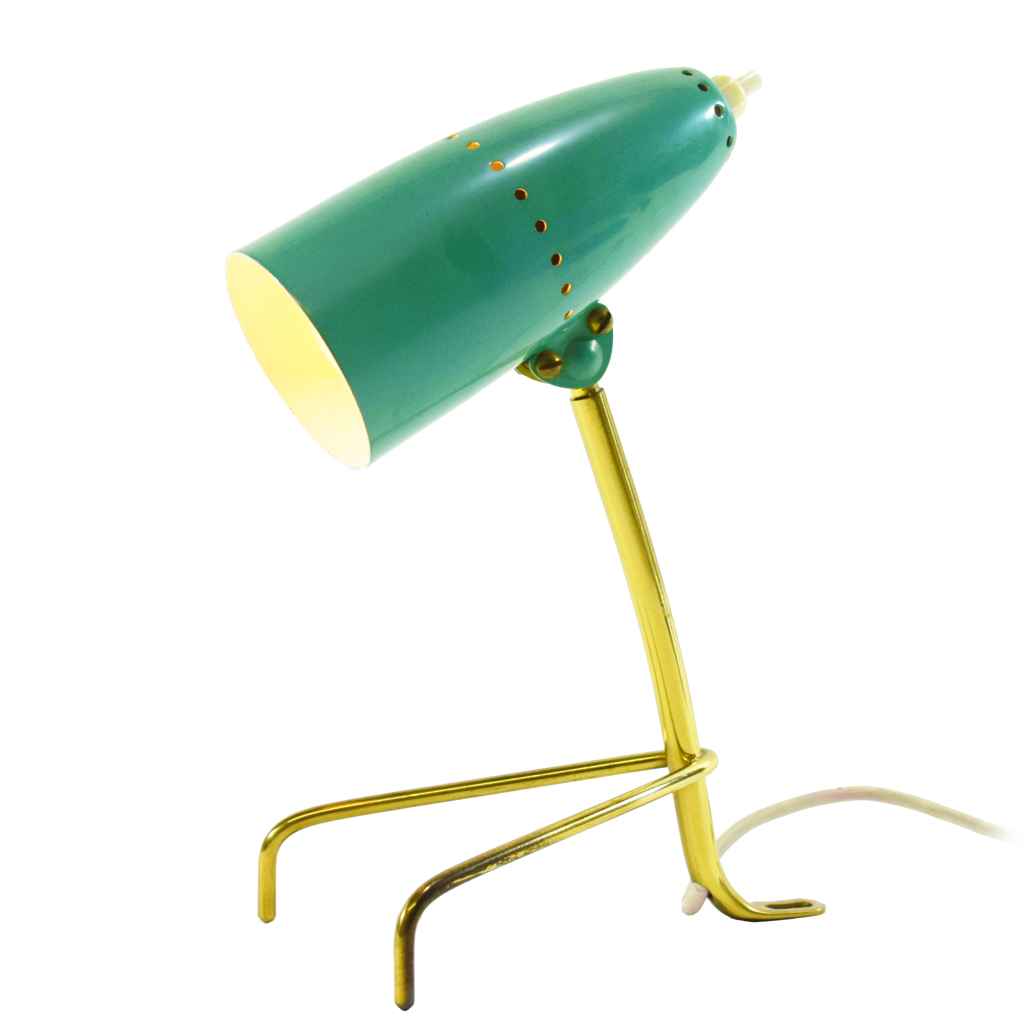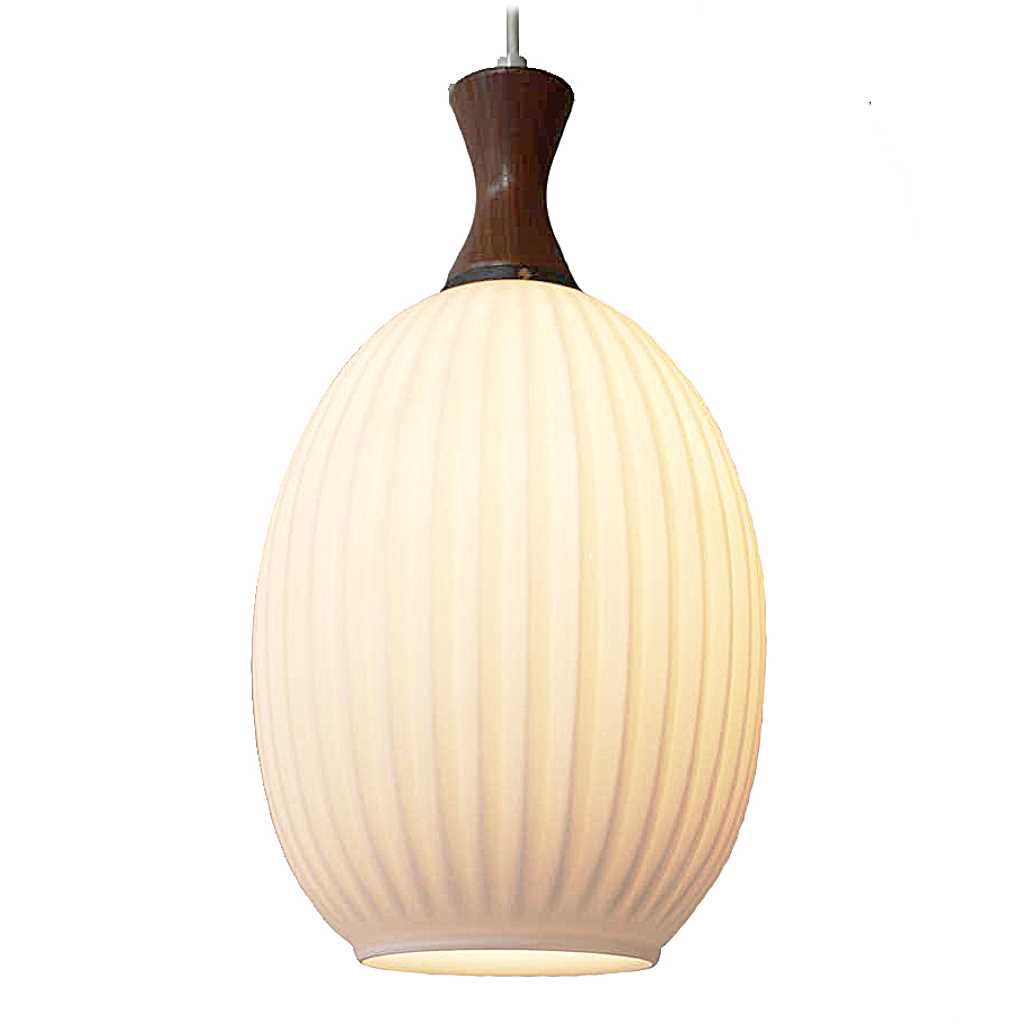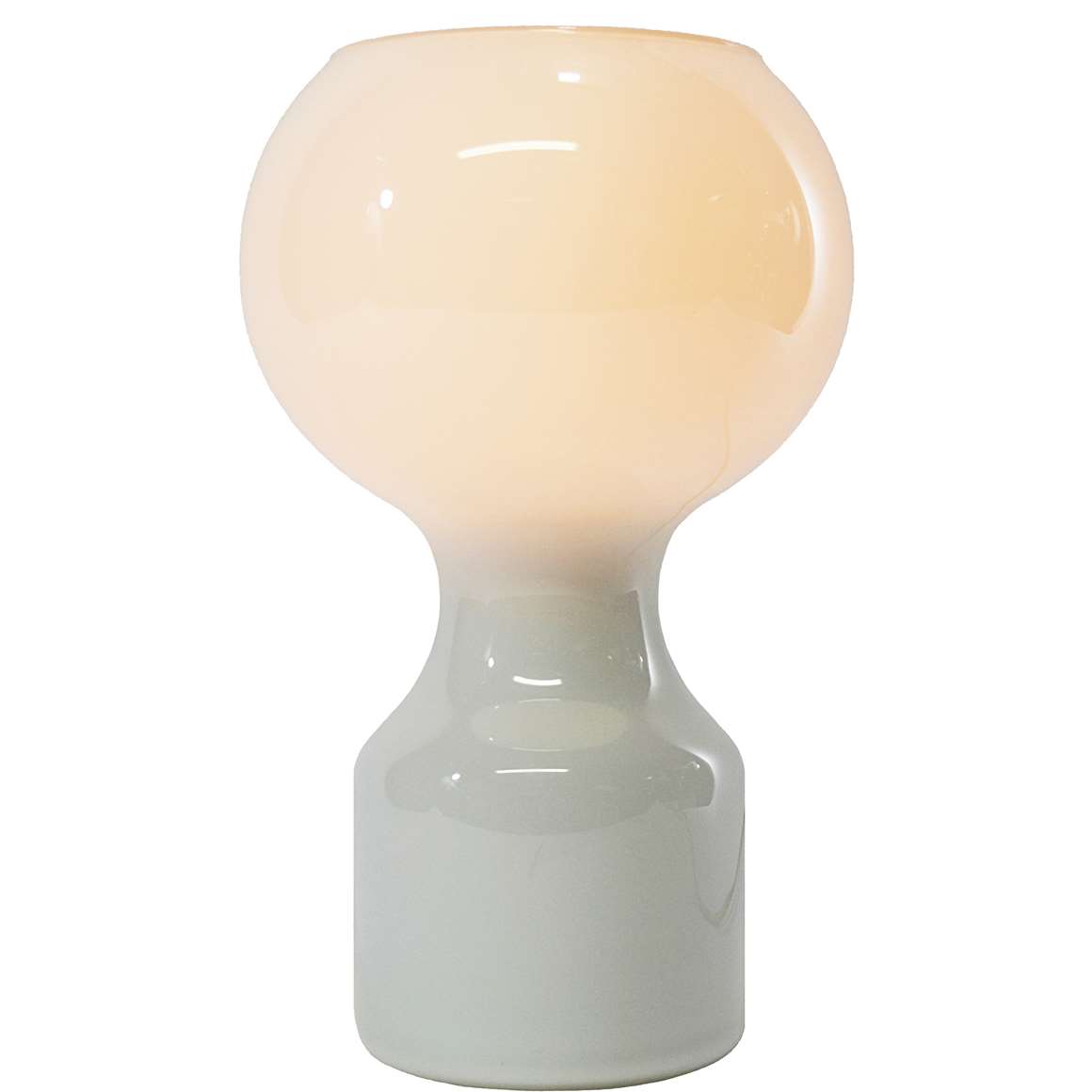Philips Minou Desk Lamp – Evoluon
The Evoluon building in Eindhoven, The Netherlands, designed by Louis Kalff.
Lamps In The Movies
Et Si On Vivait Tous Ensemble (2010)
A Philips Minou desk lamp was used as a set decoration in the French comedy film Et Si On Vivait Tous Ensemble (All Together) from 2010, with Jane Fonda, Geraldine Chaplin, Pierre Richard and Daniel Brühl.
Links (external links open in a new window)
The complete history of the company on the Philips website
The Evoluon building – Wikipedia
Website of the Philips Museum in Eindhoven
Louis Kalff – Wikipedia (only in Dutch)
Et si on vivait tous ensemble? (2010) – Wikipedia
Et si on vivait tous ensemble? (2010) – IMDb
Vintageinfo
Many thanks to Frank from nullviernull raum+kommunikation for the pictures. You can find his shop over here on Pamono.
Philips Minou Desk Lamp
Materials: Brass tripod base. Copper rod. Brass ornamental concave ring. Brown painted lamp socket holder. Silver painted lampshade holder with 3 rods. Brown painted aluminium mushroom lampshade with a hole in the middle, painted white on the inside. Bakelite or metal E27 socket.
Height: 32,5 cm / 12.79”
Width: ∅ 28,5 cm / 11.22”
Electricity: 1 bulb E27, 1 x 75 watt maximum, 110/220 volt.
Anytypeof light bulb canbeused. But, preferably a silver tipped light bulb.
Period: 1960s, 1970s – Mid-Century Modern.
Designer: To be appraised.
Manufacturer:Philips, Eindhoven, The Netherlands.
Other versions: The first edition from the 1950s has slight differences in the lampshade and the base as you can see below. The Philips Minou desk lamp exists in many colours and was made in some slight variations.
Early editions of the Minou are named Minou S. They are without grounding. The version with grounding was made from the late 60s until the late 70s, early 80s. It is named Minou 69: this one.
A similar table lamp with a conical tube in stead of a straight rod middle part is named Bijou, you can find it over here
Louis Christiaan Kalff (1897–1976)
Louis Kalff (Amsterdam, 14 November 1897 – Waalre, 16 September 1976) was the designer and art director who, more than anyone else, gave Philips a modern visual identity in the 1920s and 1930s. From 1925 onwards he worked at the Philips advertising department in Eindhoven, where he was asked to make the company’s advertising and presentation match the size and ambitions of the firm.
Philips house style and logo
When Kalff arrived, the name “Philips ” was written in many different ways. He standardised the lettering, the colours (he liked strong primary colours) and the overall layout of advertisements and packaging. In the second half of the 1920s he introduced the combination of waves and stars as symbols for radio transmission, first on packaging and later on products. In 1938 he brought the wordmark and the emblem together in the familiar Philips shield – one of his best-known contributions.
Besides the work for Philips he designed posters and graphic work for the Holland-America Line, Calvé, Zeebad Scheveningen, Holland Radio and others, always in the same clear, modern idiom.
Lighting and the LIBU (1929)
Because electric lighting in architecture was developing very fast, Kalff founded the Lichtadviesbureau (LIBU) in 1929. That bureau advised architects, municipalities and companies on how to use light in buildings, shops and public space. It did not only push Philips products, it also looked at what the market needed. Through the LIBU, Kalff organised the lighting for several world exhibitions, among them Barcelona, Antwerp and Paris.
From advertising to industrial design
After the Second World War the earlier “artistic propaganda” work inside Philips evolved into a broader industrial design service, later known as ARTO. Kalff was closely involved in this and for years he supervised the styling of radios, loudspeakers, domestic appliances and professional lighting installations. New products were often “kalfft ” first – checked for function, for looks and for recognisability as a Philips product.
Did he design the Philips lamps?
Many 1950s Philips lamps are offered today as “Louis Kalff ”. That sounds attractive, but it is not supported by Philips documentation. Kalff organised the lighting and design departments (LIBU, later ARTO), he approved designs and he set the taste, but there is no primary source that attributes specific desk or floor lamps to him personally. The similarity between his later architectural work (Evoluon) and some saucer-shaped Philips lamps, such as the Decora, Senior and Junior, simply shows that the same visual language was used inside Philips.
The story that he also designed lamps for German makers such as Cosack / Gecos is another internet repeat and has, as far as we know, no documentary basis.
Safer wording: “Philips lighting of the 1950s was developed within the design organisation created and led by Louis Kalff, but no individual lamp models can be firmly attributed to him.”
Architecture and later work
Next to graphic work Kalff also designed and co-designed buildings for Philips, such as the Dr. A.F. Philips Observatory in Eindhoven (1937) and houses for Philips directors. After his retirement in 1960 he remained active as advisor and architect. His best-known late project is the Evoluon in Eindhoven (opened 1966), designed with Leo de Bever, a futuristic disc-shaped building that perfectly fits the forward-looking image he had promoted at Philips for four decades.
Louis Kalff passed away in Waalre on 16 September 1976.
Koninklijke Philips N.V.
Inspired by the fast-growing electricity industry and by the promising results of Gerard Philips’ own experiments with reliable carbon filaments, his father, the Jewish banker Frederik Philips from Zaltbommel, financed the purchase of a small factory in Eindhoven, the Netherlands, on 15 May 1891.
The first years were difficult and the company was close to bankruptcy, but in 1895 Gerard’s younger brother Anton Philips joined the firm. With Anton’s commercial drive the family business expanded very quickly and the Philips brothers turned the lamp factory into the basis of what would become a major international electronics company.
To secure the supply of lamp parts, Philips very early started to make things in-house: its own machines, its own glass (from 1916) and even its own gas separation to fill lamps with argon, so it was less dependent on German suppliers during wartime. This strong vertical integration became typical for Philips and later also supported radio and medical products.
From the 1920s onward Philips did not only make lamps but also radios and even ran its own shortwave stations (PCJ and PHOHI) to promote them worldwide – an early mix of product and broadcasting.
In later sources the “first Philips shaver” is sometimes put in the early 1930s, but Philips itself dates the electric Philishave to 1939; in any case it shows how the company moved from lighting into small household and personal devices.
On 9 May 1940, the day before the German invasion, the Philips family left for the United States with a large part of the company’s capital. From there they continued operations as the North American Philips Company and kept control over the group during the war. After 1945 the headquarters returned to the Netherlands, again in Eindhoven.
After the war Philips became a broad technology group: radios, televisions, X-ray and medical equipment, and of course lighting, which remained one of its core businesses for decades. Only much later, in 2016, the lighting activities were split off and continued under the name Signify – all vintage Philips luminaires on this site belong to the period when lighting was still an integral part of Philips.
Today Philips is mainly a health-technology company. The roots are still in Eindhoven, but since 2025 the head office is in Amsterdam (Prinses Irenestraat 59).
